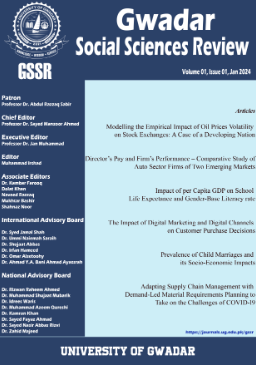Trans-Regional Connectivity Plans in Eurasia’s Heartland and the Role of CPEC/Gwadar
Keywords:
Connectivity, China, Russia, Central Asia, European Union, CPEC, GwadarAbstract
Connectivity has been the driving force behind the transformational changes taking place in Eurasia’s heartland i.e. Central Asia. Global and regional powers including China, Russia and European Union have initiated their own connectivity plans to link Central Asia for its resource base as well as to use the region as a transit hub due to its geography. The regional organizations such as Economic Cooperation Organization (ECO) and Central Asian Regional Economic Cooperation (CAREC) have also initiated plans to develop complementary trade and transportation corridors to link Central, South and West Asia. Consequently, an integrated system of east-west trans-continental trade and logistic corridors are bieng developed linking China, Central Asia, Europe and West Asia. Still an important link i.e. to connect these east-west trans-continental trade and logistic corridors with trans-oceanic corridors in the north-south direction via Afghanistan and Pakistan to South Asia and Indian Ocean is underdeveloped. Converged interests of major regional powers in a changed regional context present an opportunity to develop this link in southern direction. Central Asian Republics are also looking keen to revive this historical outlet and open up in the southern direction in an altered regional geo-economic and geo-political configuration. The southern link complements the connectivity plans of CARs, major powers and regional organizations in developing trans-regional connectivity in the heartland. Pakistan also seems enthusiastic to develop the Pakistan-Afghanistan Central Asia trade and logistic corridor to supplement CPEC and to give greater impetus to trans-regional connectivity by linking trans-continental corridors with trans-oceanic corridors
through Gwadar efficiently. The approach in study has been explanatory and exploratory employing qualitative methodology.
Downloads
Published
Issue
Section
License
Copyright (c) 2025 Gwadar Social Sciences Review (University of Gwadar)

This work is licensed under a Creative Commons Attribution 4.0 International License.




